by Lisa Cooke | Feb 20, 2017 | 01 What's New, DNA, Kids |
DNA testing for kids is a great way to spark their interest in their heritage, while teaching science, math, geography, and more. Consider these reasons and start with the budget-friendly option of an autosomal test.
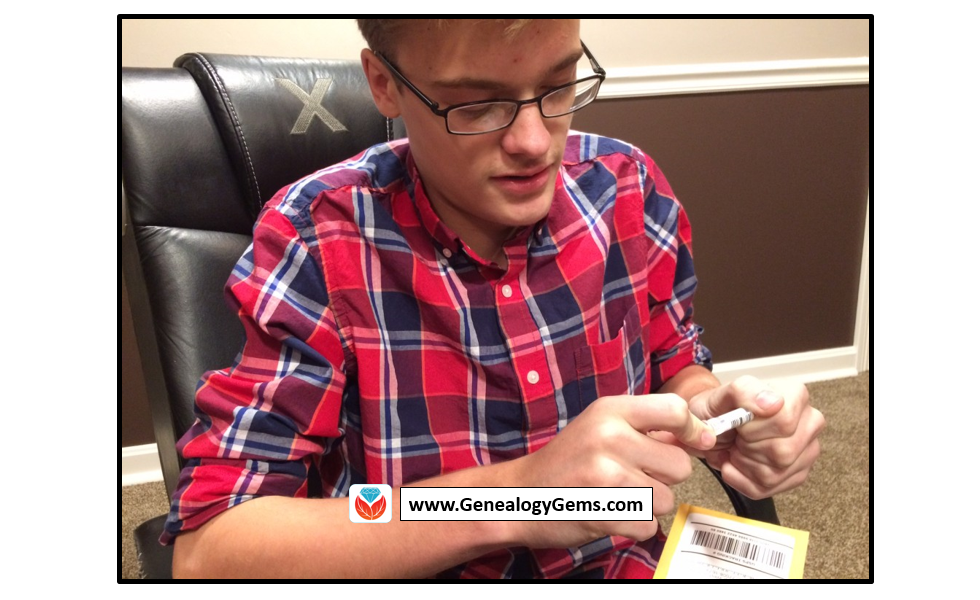
According to a 2010 study out of Emory University, if we want to encourage kids toward an activity that will positively impact them, we should steer them toward family history. The researchers reported, “Children who know stories about relatives who came before them show higher levels of emotional well-being.”
Now, I know I don’t need to convince you of this. You are already sold on genealogy. But let’s explore how DNA testing might be able to help you share your love of family history with your children and grandchildren.
Why Try DNA Testing for Kids
Since you know this is me, the genetic genealogist talking, you can probably guess what I’ll suggest for getting kids interested in family history. DNA testing is a great way to personally and physically involve them. There is the tangible process of taking the sample at home, and the marvel at how such a simple act can produce the amazing display of our ethnicity results. Since each of us is unique, it will be fun for them to compare with you and other relatives to see who-got-what-from-who. This will naturally lead to questions about which ancestor provided that bit of Italian or Irish, and wham! You’ll be right there to tell them about how their 5th great-grandfather crossed the ocean with only the clothes on his back, determined to make a new start in a new land.

If there are parts of the ethnicity report you can’t explain, use that as a hook to encourage them to start digging and to find out why you have that smattering of eastern European or Southeast Asian. Taking them for a tour of the DNA match page, you can show them how they share 50% of their DNA with their sister (whether they like it or not!) and how they share 25% with their grandparent!
DNA test results give kids a totally unique look at their personal identity with technology that is cutting edge. Looking at their DNA test results can turn into a math lesson, a science lesson, a geography lesson, a lesson on heredity or biology, or a discussion on identity. DNA is the perfect introduction to the wonders that genealogy can hold, especially for children.
A Warning and Caution
As with all DNA testing pursuits, this one should not be taken lightly, even with all of its benefits.
An important word to parents: Be sure to keep unintentional consequences in the forefront of your mind. This includes the possibility of revealing family secrets. Talk with your spouse and make sure you are both on the same page. In the end, this is your decision.
An important word to grandparents and other relatives: DNA testing is a parent’s decision. Even though you’re passionate about preserving the family’s history and the benefits of including children are numerous, you must obtain parental consent if you are not the parent.
More About Autosomal DNA Testing for Kids
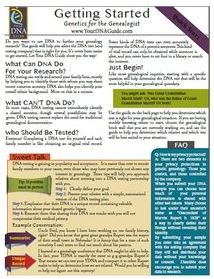 Click here to learn more about my series of how-to videos (available to Gems fans for a special price) or start your kids’ or grandkids’ DNA journey with two of my genetic genealogy quick guides. The first is a great overview and the second talks about autosomal testing which is a good test for genetic genealogy beginners.
Click here to learn more about my series of how-to videos (available to Gems fans for a special price) or start your kids’ or grandkids’ DNA journey with two of my genetic genealogy quick guides. The first is a great overview and the second talks about autosomal testing which is a good test for genetic genealogy beginners.
by Lisa Cooke | Dec 16, 2017 | 01 What's New, Brick Wall, Legacy Tree Genealogists, Professional Genealogy
Sooner or later, we all hit genealogy brick walls: a point in our family history research where we can’t seem to make any further progress. When I hit a brick wall with great-grandpa Gus in Eastern Europe, I turned to Legacy Tree Genealogists. Here’s what their experts found that I hadn’t discovered for myself.
My Genealogy Brick Wall in Eastern Europe
My great-grandfather Gustav Sporowski was born in Kotten, Kreis Johannisburg, East Prussia on July 20, 1881. His wife was born in Kreis Ortelsburg in 1878. I’ve found all of her church records, but have had no luck with his.

I’ve met so many people who get stuck researching in Eastern Europe, and East Prussia and the Belarus area in particular. (I strongly suspect that the Sporowski family came from the Sporovo lake region of Belarus). So I invited
Legacy Tree Genealogists to take a look at Gus and suggest some next steps. I wondered what someone who specialized in Eastern European research might be able to tell someone like me, who knows how to genealogy but not-so-much in that part of the world.
Reviewing My Work
Legacy Tree Genealogists assigned me to a Project Manager, Camille Andrus, who reached out to discuss what I already knew and what I wanted to learn.
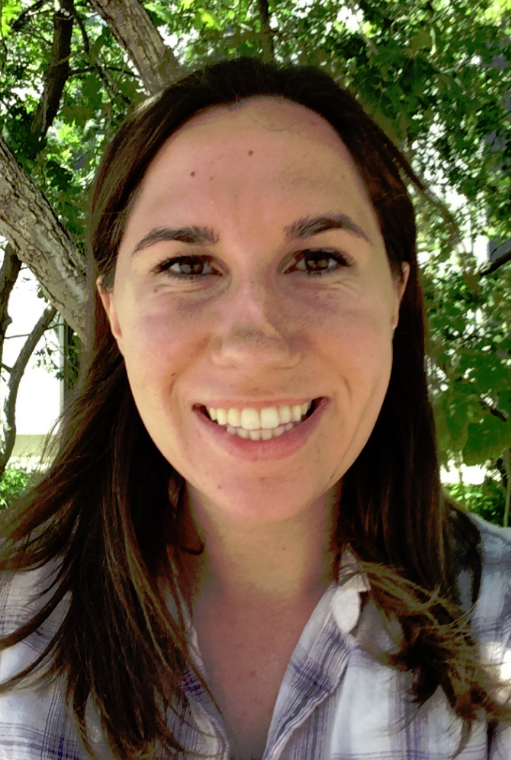
Camille Andrus, Project Manager, Legacy Tree Genealogists.
I requested their Discovery Research Plan, for which they just provide guidance about what record collections to consult and what methods or strategies to try. That way I can do the research myself (which I like doing!). I also asked Camille if she would write about her research process so I could share it with you. Here’s what she sent me:
We looked over Lisa’s work, and upon initial inspection everything looked great.
She had looked in the gazetteer (now available digitally at www.meyersgaz.org with maps of the area) and Lutheran church records. (Editor’s note: Learn more about using Meyers Gazetteer in the Genealogy Gems article 5 Expert Tips for Using Meyers Gazetteer for Your German Genealogy.)
She had searched the records for her ancestor’s supposed home parish. When that failed to yield results, she had done a partial radial search, searching records in several adjacent parishes. Check. Check. Check. She was following all of the integral steps, but still not having success.
What had she missed? What had she done wrong? The short answer — nothing. Her research was impeccable, and she was looking in the right places.
Getting Around the Genealogy Brick Wall
Camille had three specific suggestions for where to look next for great-grandpa Gus. At the end, she also offered some helpful reassurance. Here’s what she said:
1. Civil registration in East Prussia
After closer inspection of what Lisa had already tried, we saw several opportunities we could still pursue.
We looked up civil registration records available through a Polish archive, since what was East Prussia is now part of modern Poland.
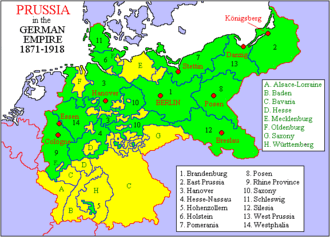
German civil registration in East Prussia began in October of 1874 and is an important resource for researching individuals from this area.
The Meyers Gazetteer confirmed that Kotten (where her ancestor was from) belonged to Kreis Johannisburg in the German Empire province of East Prussia. This village belonged to the Monethen (Kreis Johannisburg) civil registration district.[1]
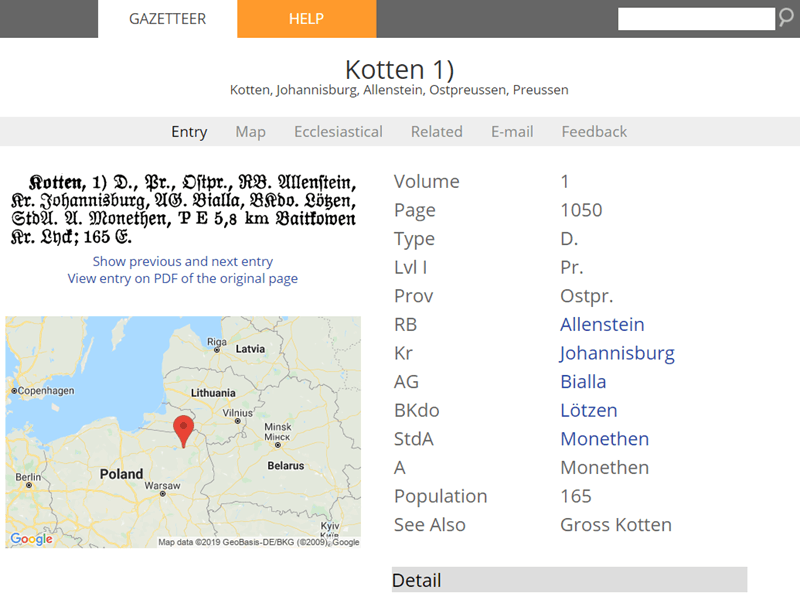
Using Meyers Gazetteer to find German places
The Olsztyn State Archive inventory lists several birth, marriage, death, and family books for the Monethen Civil Registration Office, but the books only cover the late 1930s and early 1940s. The whereabouts of the registers covering 1874 through the early 1930s are unknown.
It appears as though the records covering this time period have been lost or destroyed. This situation is not unusual for East Prussia, in general due to the numerous conflicts that have occurred in the area over time.
2. Church records in East Prussia
Another major resource for German genealogy research is church records.
The Meyers Gazetteer database noted that Protestant residents of Kotten attended church in the nearby town of Baitkowen (Kreis Lyck).[2]
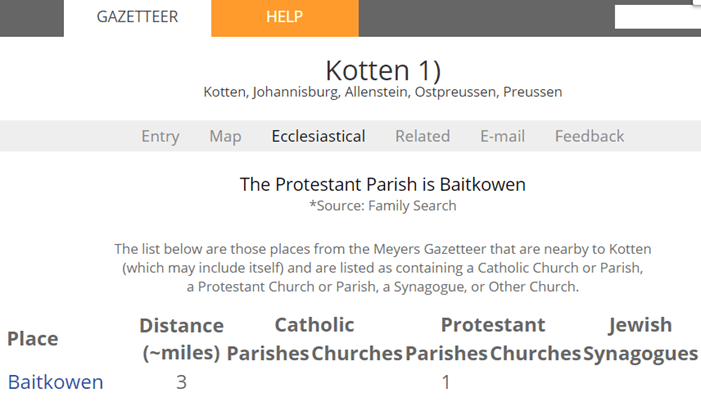
The church book inventory for Baitkowen revealed that the Protestant parish was established in 1891, a decade after the ancestor Gustav Sporowski was reportedly born. No sacramental registers for this parish are known to be extant. It should be noted that the Baitkowen parish was created from parts of the Lyck, Ostrokollen, and Drygallen parishes.[3]
The Protestant parish of Drygallen (Kreis Johannisburg) has extant baptismal records which are available on microfilm at the Family History Library for the years 1730-1821 and 1844-1875.[4] Lisa indicated that she had reviewed these files but did not find any Sporowskis.
The Lyck Landgemeinde (the congregation for parishioners living outside city limits) was founded in 1704, but there are no known extant baptismal records for this parish after 1808.[5]
3. Following up on clues
A key clue came from Lisa’s notes. She mentioned that Gustav and his wife were married in Lütgendortmund, a town hundreds of miles west of Gustav’s birthplace, before ultimately immigrating to the United States.
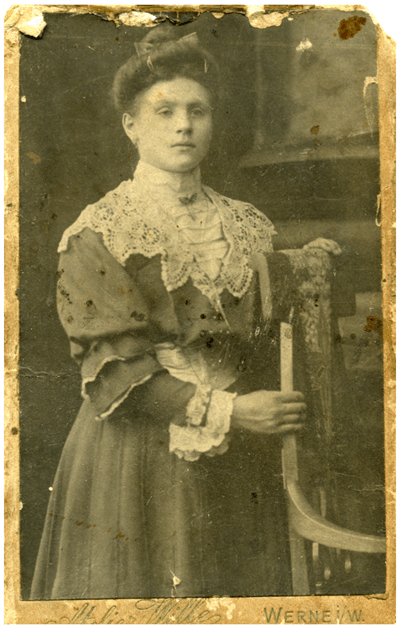
Louise at the time of her marriage
Luckily, their marriage occurred in a time when civil registration had been instituted. A search for marriage records showed there are civil registration records available for the town of their marriage, which are available at an archive in Detmold.
We were able to advise Lisa that further research should pursue this record, as it may list information about his parents.
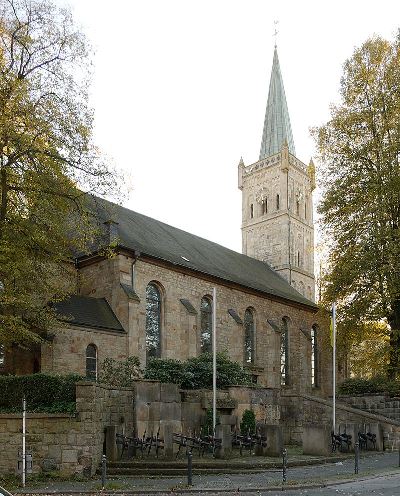
The Protestant Bartholomew Church in Lütgendortmund, Dortmund, Germany. Von Smial – Eigenes Werk, FAL. Click to view.
The Bottom Line
The bottom line is if you feel stuck, it’s not necessarily because you are doing anything wrong.
Review the “checkboxes” of your research plan to ensure you aren’t missing any integral clues.
If after final review of methodology concludes that you’ve pursued every avenue, the lack of success may be attributed to gaps in the records or perhaps they have been lost completely. Other times all you need is one clue to put you back on the right track.
This is exactly the kind of advice I was hoping for: expert and specific!
Hire a Professional Genealogist for a Quick Consult or Project
If you have hit a genealogy brick wall in Eastern Europe (or anywhere else) and would like a professional to review your work, I recommend contacting Legacy Tree Genealogists. They have helped many clients like me to solve their family history mysteries, and would love to help you as well!
You can hire a genealogist like Camille through their Genealogist-on-Demand™ service. Receive research strategies and advice from a professional genealogist during your 45-minute consultation that will help you continue your own research. Your virtual genealogy consultation will allow you to have your questions answered in real-time by an expert–all from the comfort of your own home!
Need even more help? Here’s an exclusive offer for Genealogy Gems readers: Receive $100 off a 20-hour research project using code GGP100. To learn more about Legacy Tree services and its research team, visit https://www.legacytree.com.
Disclosure: This article contains affiliate links and Genealogy Gems will be compensated if you make a purchase after clicking on these links (at no additional costto you). Thank you for supporting Genealogy Gems!

[1] Search the Meyers Gazetteer, Kotten, Johannisburg, Allenstein, Ostpreussen, Preussen, http://meyersgaz.org/place/11050078, accessed August 2017.
[2] Search the Meyers Gazetteer, Kotten, Johannisburg, Allenstein, Ostpreussen, Preussen, http://meyersgaz.org/place/11050078, accessed August 2017.
[3] Ostpreussen, Genealogische Quellen, Kirchbuchbestände Kreis Lyck, ev. Baitkowen (Baitenberg), http://wiki-de.genealogy.net, accesesed August 2017.
[4] Ostpreussen, Genealogische Quellen, Kirchbuchbestände Kreis Johannisburg, ev. Drigelsdorf (Drygallen), http://wiki-de.genealogy.net, accesesed August 2017.
[5] Ostpreussen, Genealogische Quellen, Kirchbuchbestände Kreis Lyck, ev. Lyck Stadtgemeinde, http://wiki-de.genealogy.net, accesesed August 2017.
by Lisa Cooke | May 6, 2018 | 01 What's New
Here’s the latest news from the Federation of Genealogical Societies and their 2018 conference. FOR IMMEDIATE RELEASE 3 May 2018 – Austin, Texas Registration is open for the Federation of Genealogical Societies Annual Conference in Fort Wayne, Indiana 22-25...
by Lisa Cooke | Dec 22, 2023 | 01 What's New, Immigration, United States |
VIDEO & SHOW NOTES: Discover how to search for ancestors who may be included on the Ellis Island Immigrant Wall of Honor, and learn how you can honor ancestors’ by adding them to the list.
Watch Now:
Resources:
Download the ad-free Show Notes cheat sheet for this video here. (Premium Membership required.)
Show Notes: Ellis Island Wall of Honor
Millions of our ancestors came through Ellis Island in New York. Mine certainly did. So it’s a great place for genealogists to explore and learn new things about their family history. Well, there have been some changes and things happening over at the Ellis Island Foundation. And here to tell us more about it is Suzanne Mannion. She’s the Director of Public Affairs have the Statue of Liberty Ellis Island Foundation.

The American Immigrant Wall of Honor-Courtesy of Paul Seibert Photography
About the Ellis Island Wall of Honor
From Suzanne: The American immigrant Wall of Honor was introduced in 1990, when the Ellis Island Museum opened, originally, it was after the foundation had restored Liberty Ellis Island. It was a way to support the foundation. But more importantly, it was a way to celebrate people’s individual family immigrant experience.
Primarily it was Ellis Island immigrants and or their descendants whose names are on the on the wall for the start. Then over the years, it expanded. It’s now open to everyone, regardless of your immigration story or timeline.
It’s really been so well received. There are more than 800,000 names on the original wall of honor. So, that actually filled up and we had to turn people away and say, sorry, we’re filled up. Then through our partnership with the National Park Service, we were able to expand the Wall of Honor, which we just announced earlier this year.
The first round of names on the expanded wall are being submitted right now, and through the end of this year (2023). Those names will be unveiled in the summer of 2024. We were so excited that the Park Service gave us this opportunity, because people were disappointed thinking they had missed their chance to include their ancestors. So many people want to celebrate whether it’s themselves, their parents, or a loved one. They want to celebrate the immigrant experience, because that’s what Ellis Island is all about whether your family came here like mine in the in the mid-1800s or last year. It’s all about the celebration.
Names Expanded to All Immigrants
From Lisa: You might be really surprised to realize that many of the names that are on the wall are not people who came through Ellis Island. Normally at an historic site you would expect to see plaques and signage only referring to those involved with that site. So, I’m interested, when did that decision get made? When did it change from a wall of honor Ellis Island to including everybody?
From Suzanne: It was probably in the early 2000s. So, as you know, the Ellis Island database was launched in April of 2001.
Passenger Database Search
And so, with that people were celebrating the Ellis experience. Whether or not it’s true, I say oh, we should take some credit for helping genealogy become such a popular pastime! So, with that people came in, and even those visiting who didn’t have roots through Ellis Island, they felt the connection to America’s immigration story. So, people started asking if they could add their names to it. And it made complete sense.
Our goal is to continue expanding our database, so it has more ports of entry. And with that, we’re at the National Museum of Immigration.
So, we thought, let’s tell the whole story. So yeah, it’s been, I would say, well over a decade that the immigrant didn’t have to have come through Ellis Island to be included. I’m loving seeing and hearing other people’s stories and these different countries because it was very much a European thing like that. And now, they’re from all over the world.
Searching the Wall of Honor Database
From Lisa: You mentioned that there is a database. Before we try to submit a name, we’d like to check and see if the name is already there. Where can they search this database on the website, and would include any more information on that particular database besides just the fact that the names on the wall?
From Suzanne: Yeah, there’s two different databases. There’s the Ellis Island database through which one can trace family or anyone who came to the port of New York Between 1820 and 1957.
Ellis Island Passenger Database Search
And then the Wall of Honor database
Ellis Island Wall Of Honor and Database Search
In there you can see the name of the person who’s on the wall, and the person who submitted the name. So, some people do it for themselves. But it could be from Suzanne, “in honor of her great, great, Grandfather Michael Mannion.”
How to Add a Name to the Wall of Honor
From Lisa: What’s the process for adding our ancestor’s name? You mentioned that there might be a deadline. We’re recording here in 2023. Can they continue to add names into the new year?
From Suzanne: The opportunity is continuous. But what we do is we only put up a new panel once a year. So, from January 1 to December 31, people submit their names. Then at the beginning of the following calendar year, we create a new panel, and then we unveil it in early summer.
Add a Name to the Wall of Honor
So, if you want to make it onto that first panel of the wall expansion, then please submit the name or names by the by the 31st of December, 2023. But you can certainly participate after that.
Foundation Fundraiser and Cost
From Lisa: I believe this is a fundraiser for foundation correct?
From Suzanne: It is such a great way to show support for the foundation and the work that we do in restoring and preserving the two monuments. The cost starts at $275 for a one-line inscription.
Add a Name to the Wall of Honor
The website explains the process and the pricing. There are higher levels such as Steward levels, if you want more lines. That provides additional support for the foundation. Also, if you join, become a member at a certain level, that includes a wall of honor inscription. So, there are many ways to support the work that we do.
The History of the Foundation
We’ve been around since 1982. President Reagan asked Lee Iacocca to head up the effort to not only raise money, but to oversee the restoration of the statue and of Ellis Island for their Centennials. We’ve continued to work closely with our partners at the National Park Service.
In 2019 we opened the Statue of Liberty museum on Liberty Island.
Statue of Liberty Museum
It’s a small museum but with a big, big impact. There are beautiful visuals, and her original torch lives right there.
We don’t take government money to do any of the projects at the islands. It’s all through donations and has been since our inception. And we’re very proud of that.
From Lisa: I remember back in high school when Lee Iacocca was taking this on, and my grandmother was so excited because her parents had come through Ellis Island. It was in really tough shape back then. What stands there today is just amazing. It’s a wonderful experience. I encourage everybody watching to at some point make the visit because it really is heart touching.
EarthCam at Ellis Island
From Suzanne: Yes, and check out our website. We have some amazing views ! We are partnering with a company called EarthCam. You can see different views from the statue, and learn more
State of Liberty EarthCam
How Donated Money is Used
From Lisa: In the spirit of good stewardship, how is the money used? Does it only support the creation of the Ellis Island Wall of Honor? Or are there specific projects that you’ve had in mind this year that this money goes directly to that we can maybe look forward to in the future?
From Suzanne: Yeah, I can’t say right now. But I would love to come back in a few months to talk about a project we’re planning over on Ellis Island.
The donations that come via the Wall of Honor support the foundation’s mission in general, to restore and preserve the two monuments. And that includes maintaining the wall of honor.
Another thing that may inspire people to add the name this year is because costs are going up to not only create this new expansion and to maintain the wall, there will be a $25 increase in inscription starting January 1, 2024.
From Lisa: Suzanne, it’s always great to talk to you. Thank you so much for sharing this news. And I look forward to new and more news next year.
Resources:
Download the ad-free Show Notes cheat sheet for this video here. (Premium Membership required.)


 Click here to learn more about my series of how-to videos (available to Gems fans for a special price) or start your kids’ or grandkids’ DNA journey with two of my genetic genealogy quick guides. The first is a great overview and the second talks about autosomal testing which is a good test for genetic genealogy beginners.
Click here to learn more about my series of how-to videos (available to Gems fans for a special price) or start your kids’ or grandkids’ DNA journey with two of my genetic genealogy quick guides. The first is a great overview and the second talks about autosomal testing which is a good test for genetic genealogy beginners.









